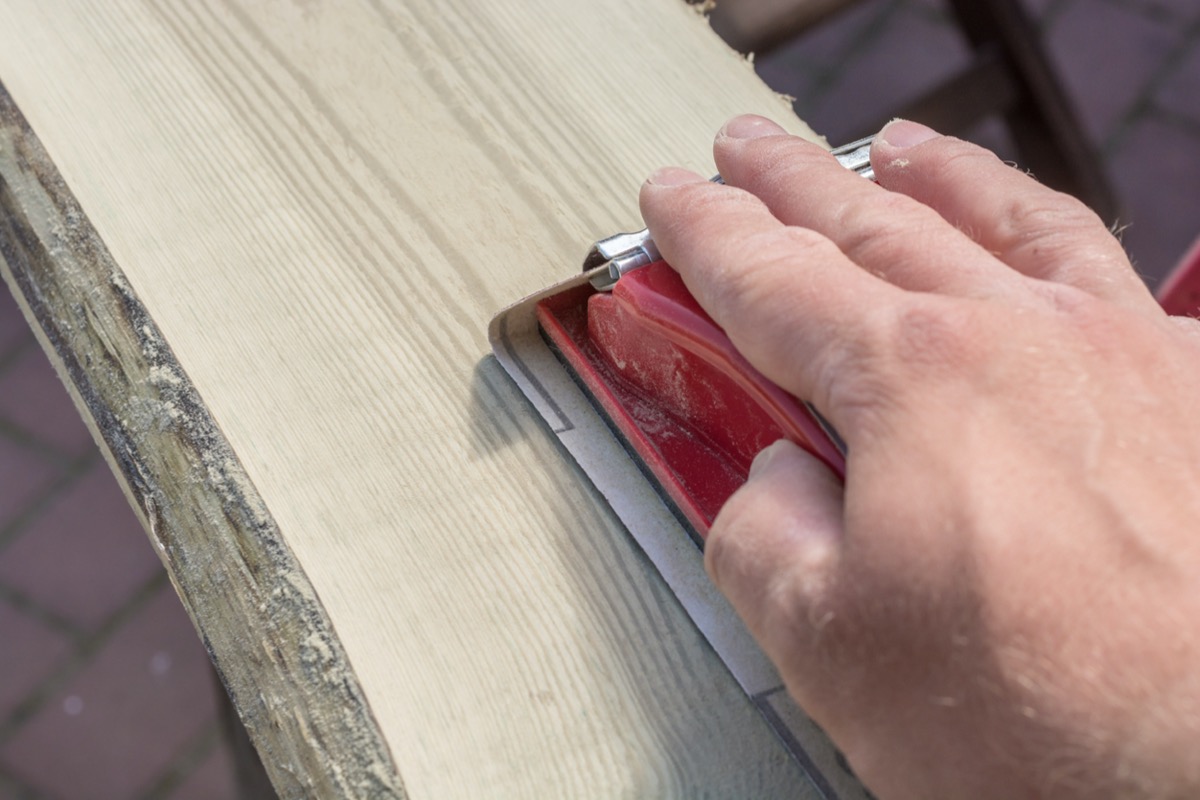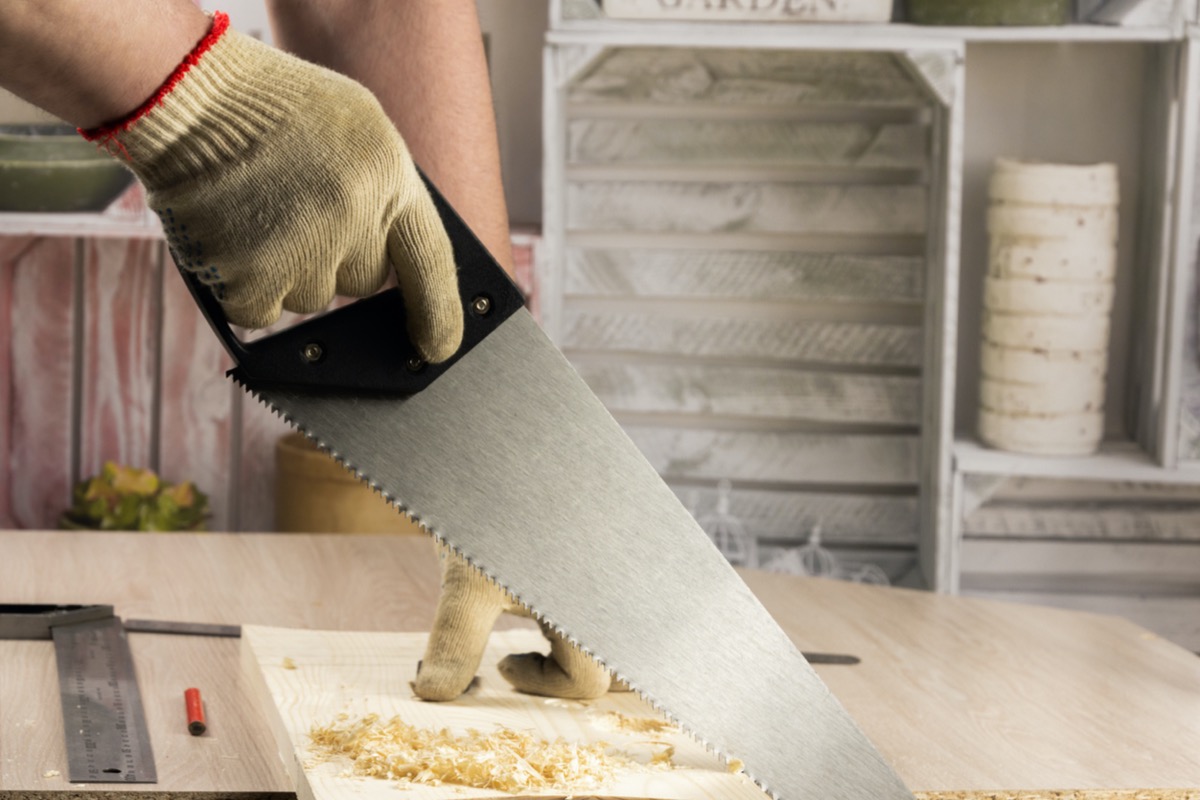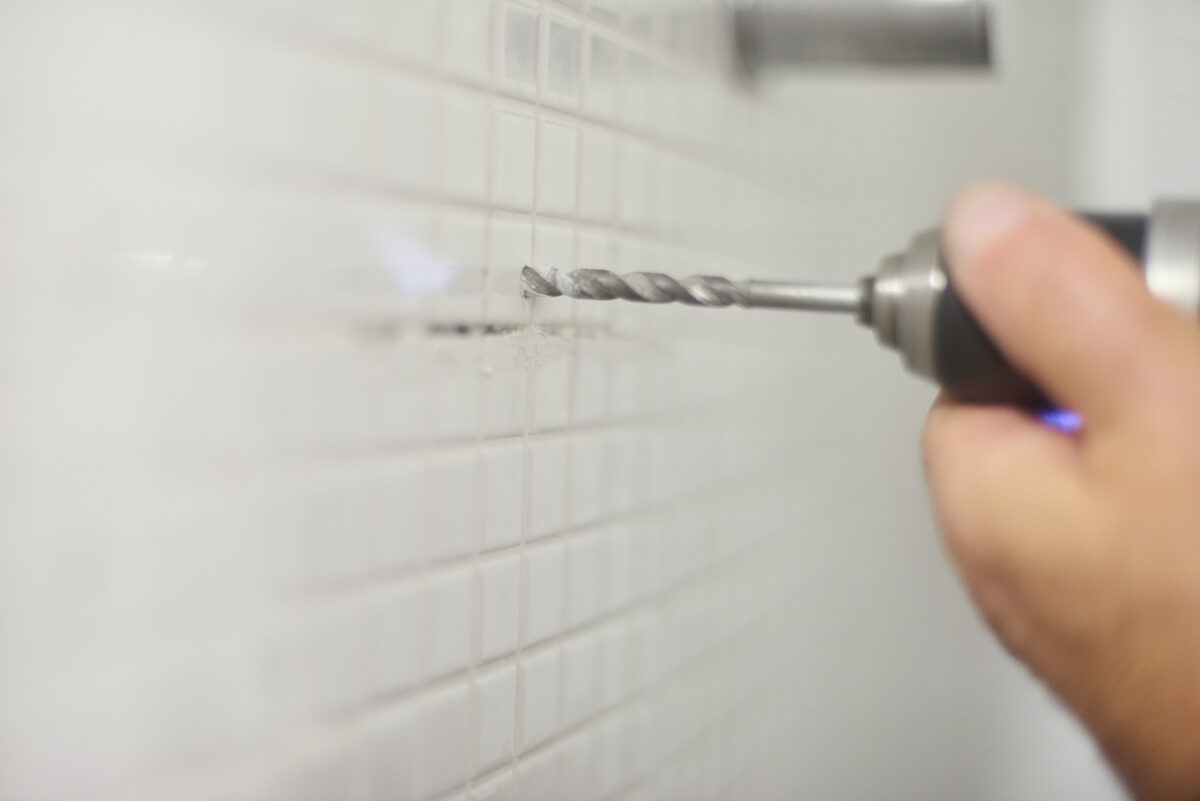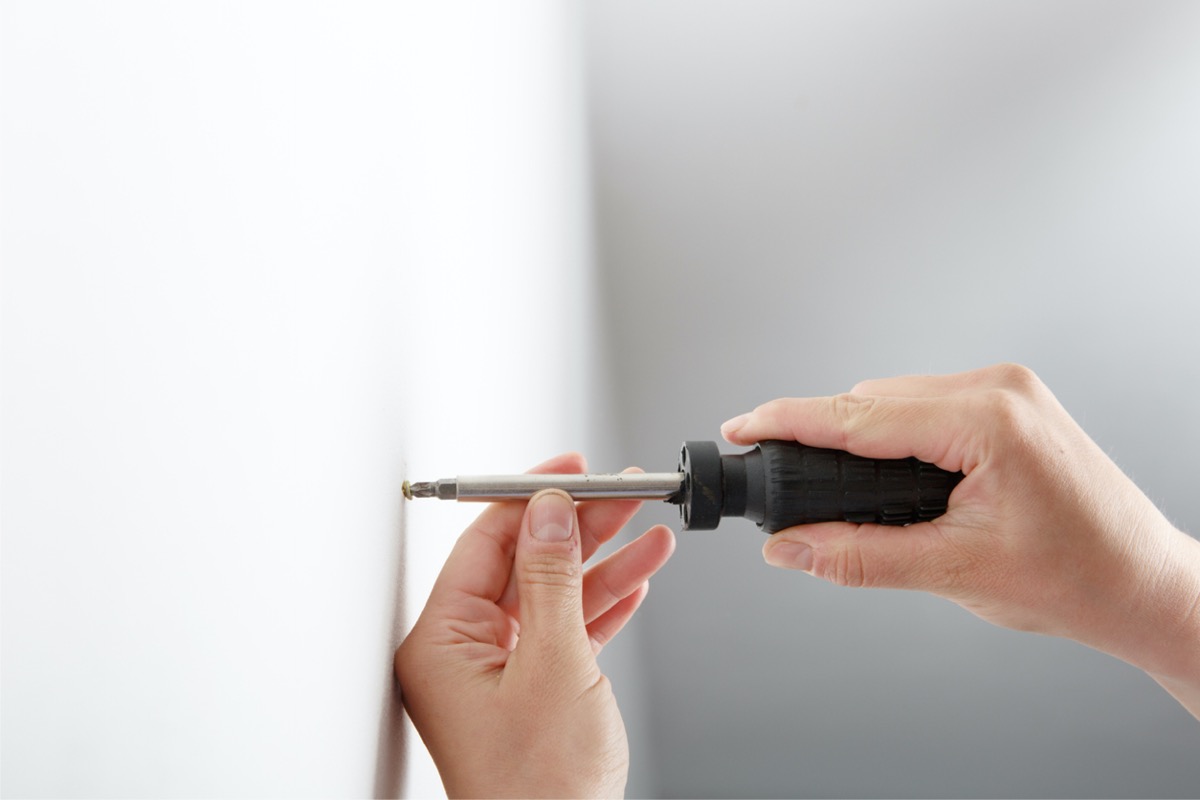

We may earn revenue from the products available on this page and participate in affiliate programs. Learn More ›
Most folks are familiar with the phrase, “the right tool for the right job.” While there’s good reason for that adage to exist, the reality is that it’s not always, well, reality. Sometimes a DIYer doesn’t have the right power tool on hand to complete a project, or that new power tool costs far too much for them to justify the purchase. Or maybe the battery is just dead.
When you don’t have just the right tools at hand, what can you do in a pinch? Here are some easy swaps you can make in such scenarios that may not save you time, but will certainly save you some dough.
No Router? Get Sanding
For many DIYers, the first projects they handle are small shelving units, coffee tables, or similar projects. Many of these call for a router to round over the edges. The problem is that most new DIYers haven’t curated their entire power tool set yet, and a router isn’t typically one of the first power tools purchased by beginners.
For those who don’t own a router, it’s possible to ease the edges of wood with a sheet of sandpaper and a sanding block. It takes much longer, but it doesn’t require a big investment.

Chisel Those Hinges
Installing a new door is a lot easier with the help of a router, but it’s not impossible without one. Instead of routing out those hinge mortises, use a utility knife to score the outline of the hinges and then chip away at it with a chisel. Make a series of shallow cuts across the mortise about ⅛ inch apart, and then remove them by positioning the chisel at an angle and tapping it down the length of the mortise.
A set of wood chisels can be a worthy investment, so be sure to choose a quality set.
RELATED: Building the Essential Toolbox: 20 Tools You Can’t DIY Without
Handsaws Still Work
Cutting lumber or boards to length with a miter saw is fast and accurate, but setting up a saw for one or two cuts might not be worth the hassle. Instead, mark the top and edge of the board with a speed square and slowly make the cut with a hand saw. If the blade tracks on both the vertical and horizontal lines, it’s sure to be square from all angles.

Use a Nail to Start a Screw
When it’s necessary to drive a screw straight through a board but you don’t have a drill on hand, try this hack: Blunt a nail’s point with the head of your hammer and drive it where the screw needs to go. The blunted end of the nail pushes wood fibers through the wood instead of splitting them aside or following the grain of the wood. After removing the nail, the screw should be easier to drive by hand.
Hammer Drills Aren’t Always a Necessity
Getting a hole started in smooth tile without a hammer drill can be a pain, but this may help: Place a piece of painter’s tape on the tile and mark the hole’s location. Holding a masonry bit (which is still necessary) in place, lightly tap the back of the bit with a hammer. This will result in a chip that will hold the bit in place while drilling with a standard drill. If the drill is still struggling to make progress, lightly tap the back of the drill with your palm.

Don’t Forget the Humble Circular Saw
The circular saw is one of the most practical and versatile tools a DIYer can use, and (in many situations) they can take the place of more than one tool. They can crosscut, making them a good substitution for a miter saw. They can also rip, making them a useful alternative to a table saw. Circular saws can even cut mortises and dados in a pinch, making these one of the best tools for any DIYer.
RELATED: Building the Essential Toolbox: 20 Tools You Can’t DIY Without
Install Drywall Anchors Without a Drill
Installing plastic drywall anchors for hanging pictures and other light-duty applications without a drill is quite easy using nothing more than a screwdriver. Simply mark the wall where the anchor needs to be, hold the tip of the screwdriver on the mark, and tap the butt of the screwdriver until it pokes through the wall.
Remove the screwdriver, insert the anchor, and tap it home with the butt of the screwdriver. If the anchor won’t budge, reinsert the screwdriver and ream the hole a bit before trying again.

